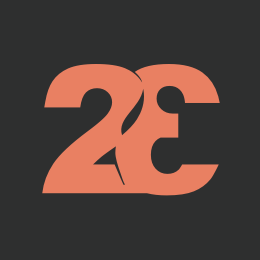With the rise of tablets and e-readers, ebooks are only growing in popularity. According to a newly released report by Pew Internet, as of January 2014, 28% of American adults reported they had read an ebook in the previous year; up 8% since 2012. On-the-go content in today’s increasingly mobile world makes them an even smarter choice as a marketing offer.
A Word About Design
It’s important to first establish consistent branding to which all your marketing content — not just your ebooks — adheres to. This will give your ebook a more professional look which translates to a sense of credibility and familiarity. A good design will establish consistent elements such as fonts/sizes, color schemes, images, headers, etc. Having your designer create a simple template of these elements for your various marketing needs like ebooks, print collateral, or landing pages will insure brand consistency throughout your inbound marketing and traditional marketing collateral.
Cover
We know that people will judge books by their covers. Ebooks are no different, so it’s important to create one that’s both visually appealing and consistent with your branding.
- Make the title easy to read
- Remove elements that won’t be legible or readable at a small size
- Include branding elements you decided on in your branding template
- Include a feature image or graphic that can be translated though landing pages & call to action graphics
Simplicity is a virtue in a successful ebook cover design. Especially if the ebook will be used graphically in a call to action or on a landing page. It’s hard to let go but you’ll be happier in the end.
Table of Contents
Be sure to include a table of contents in every ebook you publish. This gives the readers a sense of how the ebook is organized. To make this even more user-friendly for your readers, some programs like Adobe InDesign make it possible for you to hyperlink chapters and specific pages, creating an interactive table of contents, allowing readers to jump to certain sections of your ebook when they click on corresponding links in the table of contents.
Chapter Titles
By clearly separating your chapter titles, you’ll give the reader a clear indication of their progress throughout the ebook. Just like HTML, using a variety of header tags (h1, h2, h3, h4, etc.) will help distinguish chapter, section, and call to action elements. Avoid starting a new chapter in the middle of a page after a chapter or section has ended. Instead opt for the top of a new page.
Share Links
Adding share buttons and even an email link in either the header or footer provides an easy way for readers to share the ebook with their social networks. Customize your message with various services such as Share Link Generator or hrefshare to send your readers to landing pages or offers with specific messages.
A Call to Action
Perhaps the most important element of your ebook design is your final call to action. After your reader completes your ebook, we want them to do something. Here is that place. Create a full width graphic leading them to a sales landing page. Or direct them to your website or blog, or encourage them to contact you directly via phone or email. Whatever you do, keep the final call to action relevant to the topic at hand. This way, you can guide your reader (and potential sale/client) into the next phase of your campaign.
Conclusion
Having a well-designed ebook in your arsenal of inbound marketing materials is a powerful tool to generate leads. When your content is strong and your design is aesthetically pleasing, you offer your readers information that is easy to approach and that has a higher perceived value. Implementing a few of these components will ensure your readers come back for more.
